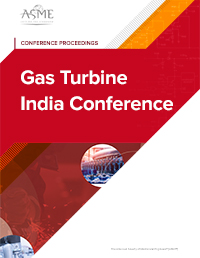Abstract
In a transonic compressor rotor, tip leakage flow interacts with passage shock, casing boundary layer and secondary flow. This leads to increase in total pressure loss and reduction of compressor stability margin. Casing treatment is one of the passive endwall geometry modification technique to control tip leakage flow interaction. In the present investigation effect of rotor tip casing treatment is investigated on performance and stability of a NASA 37 transonic compressor stage. Existing literature reveals, that endwall casing treatment slots i.e., porous casing treatment, axial slots axially skewed slots, circumferential grooves, recirculating casing treatment etc. are able to improve compressor stability margin with penalty on stage efficiency. Turbomachinery engineers and scientists are still focusing their research work to identify an endwall casing treatment configuration with improves both compressor stall margin as well as stage efficiency. Hence in the current work, as an innovative idea, effect of casing treatment slot along rotor tip mean camber line is investigated on NASA 37 compressor stage. Casing treatment slot with rectangular cross-section was created along the rotor tip mean camber line. Four different casing treatment configurations were created by changing number of slots on rotor casing surface. In all four configurations casing treatment slot width and height remains same. Flow simulation of NASA 37 compressor stage was performed with all these four casing treatment configurations. A maximum stall margin improvement of 3% was achieved with a particular slot configuration, but without any increase in compressor stage efficiency.












